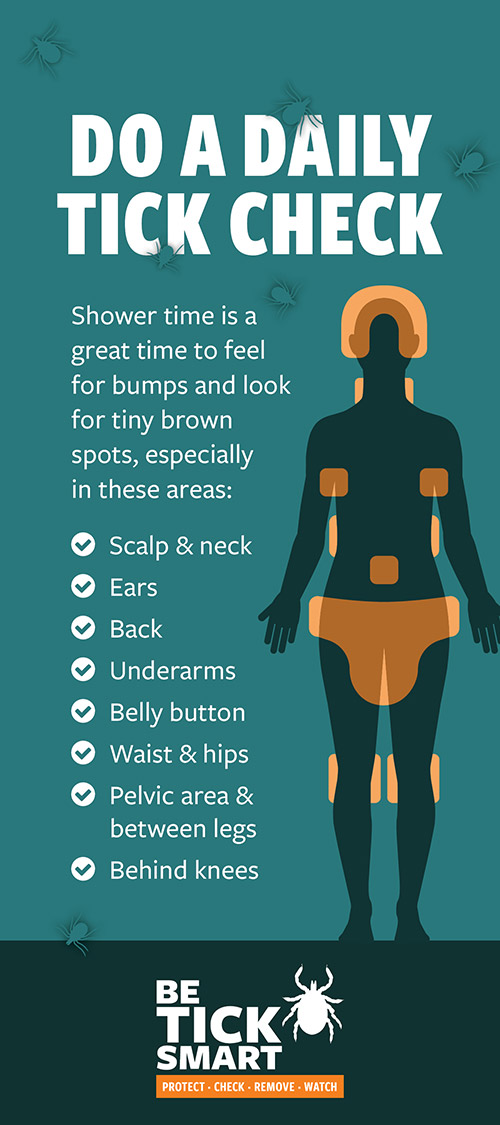Lyme disease is caused by an infection with the bacteria Borrelia burgdorferi, spread to humans by blacklegged “deer” ticks.
Vermont’s 3 year average incidence rate for Lyme disease is the second highest in the U.S.A.’s and the rate of tickborne diseases in Vermont is increasing.
When Lyme disease is accurately diagnosed and properly treated patients often recover completely. However, some individuals experience long-term, debilitating effects, even after completing standard treatment.
There are other tickborne diseases as well as Lyme disease. According to the Vermont Department of Health, Bartonella, Babesia, Anaplasmosis, Powassan virus, Erlichiosis, and other tickborne pathogens have been found in Vermont. While “Lyme disease” usually refers specifically to an infection with Borrelia burgdorferi, the term is sometimes used to describe a tickborne illness involving multiple pathogens.
Tickborne diseases can affect the skin, heart, nervous system and joints. They can appear in unique ways and mimic other diseases or disorders including heart conditions, Anxiety, Bi-polar disorder, Multiple sclerosis, Fibromyalgia, Chronic fatigue syndrome, Depression, and more.
When tickborne disease symptoms do not resolve after treatment it can sometimes be called “Chronic Lyme.” There is controversy about whether these ongoing symptoms represent a chronic infection, or an ongoing immune response. The CDC refers to this condition as “Post-Treatment Lyme Disease Syndrome” (PTLDS) while others refer to it as “Post Treatment Lyme Disease”(PTLD). According to the CDC the cause of PTLDS/PTLD is unknown, and may be an ongoing immune response, an active infection, or a different, unknown cause.
Lyme disease may need a clinical diagnosis
According to the CDC, a diagnosis of Lyme disease should be based on symptoms, and potential exposure to ticks. A negative blood test for Lyme disease does not always mean you are free from infection. If you have signs and symptoms of Lyme disease you may be infected, even if a blood test is negative. It is also possible to contract a tickborne disease that is not Lyme disease.
Resources
About VTLyme

Our Mission at VTLyme.org is to provide equitable information, prevention education, and support for Vermonters affected by Lyme and other tick-borne diseases.
- Educate Vermonters about the prevention of tick-borne diseases, and the wide-ranging symptoms of tick-borne illnesses.
- Provide Vermonters access to accurate and updated information about the diagnosis and treatment of tick-borne diseases.
- Encourage Vermont medical providers to gain knowledge and expertise in the diagnosis and treatment of Lyme and other tick-borne diseases.
- Provide dependable support and resources for individuals and families in Vermont affected by Lyme and tick-borne diseases.
This site is created for Vermonters who are concerned about, or affected by, tick-borne disease. It can be difficult to find accurate, unbiased information about diagnosis and treatment online, especially when looking for information and resources specific to Vermont.
VTLyme.org does not provide medical advice. Use of this site is for information only. Please consult your medical provider before making any decisions about diagnosis or treatment.
Recent Posts
Spring/Summer 2020 Newsletter
Latest News Because many Vermont children are home due to Covid-19 school closures VTLyme.org is emphasizing prevention this spring; creating new prevention [...]
Coronavirus and Tickborne Diseases
While information about how the Covid-19 virus affects immunocompromised patients may be worrying to some Vermonters with TBDs, remember there are steps you can take both to prevent infection and reduce the impact of a virus on your body.
Letter for the Vermont Department of Health: Improving Tickborne Disease Outreach and Education
According to the CDC, Vermont has the second-highest 3-year average incidence of Lyme disease in the USA, and other tickborne infections are [...]
Can You Donate $10?
VTlyme.org is applying for grants to better support Vermonters affected by Lyme and tick-borne diseases. We need to show we have community support! Please donate $10 to VTLyme.org.

























